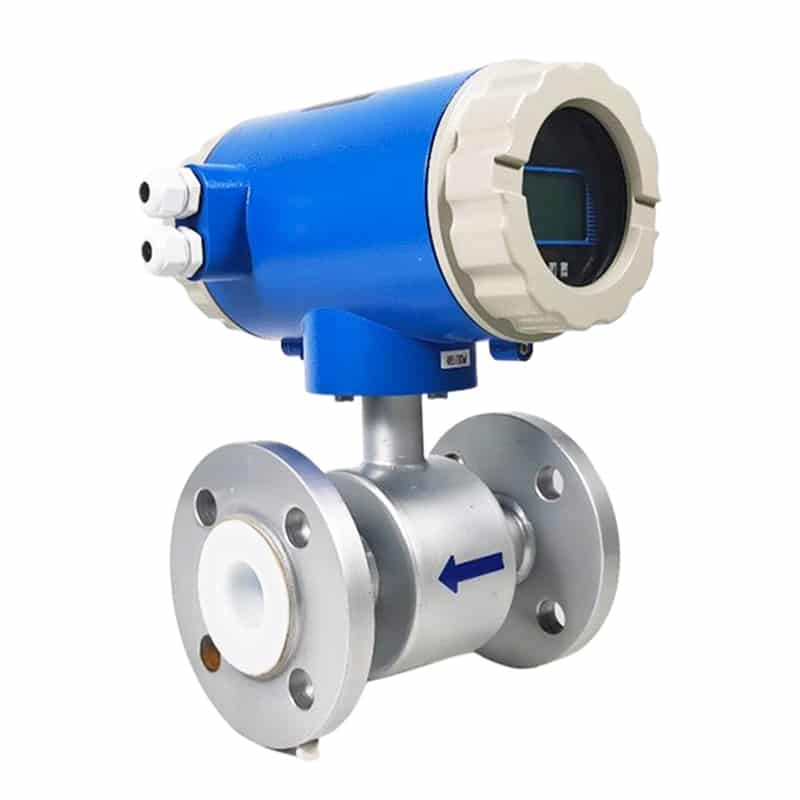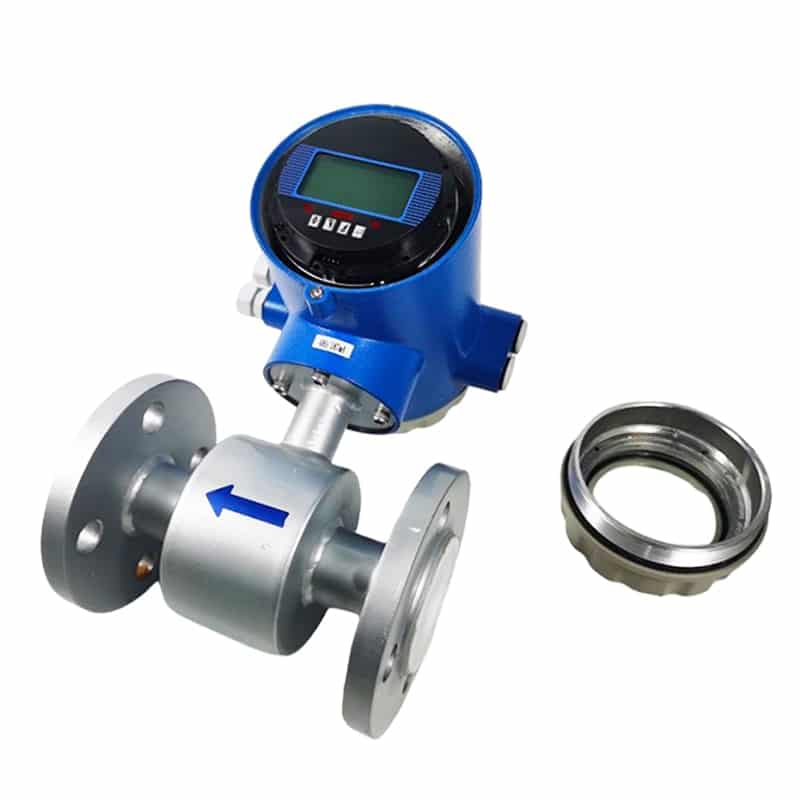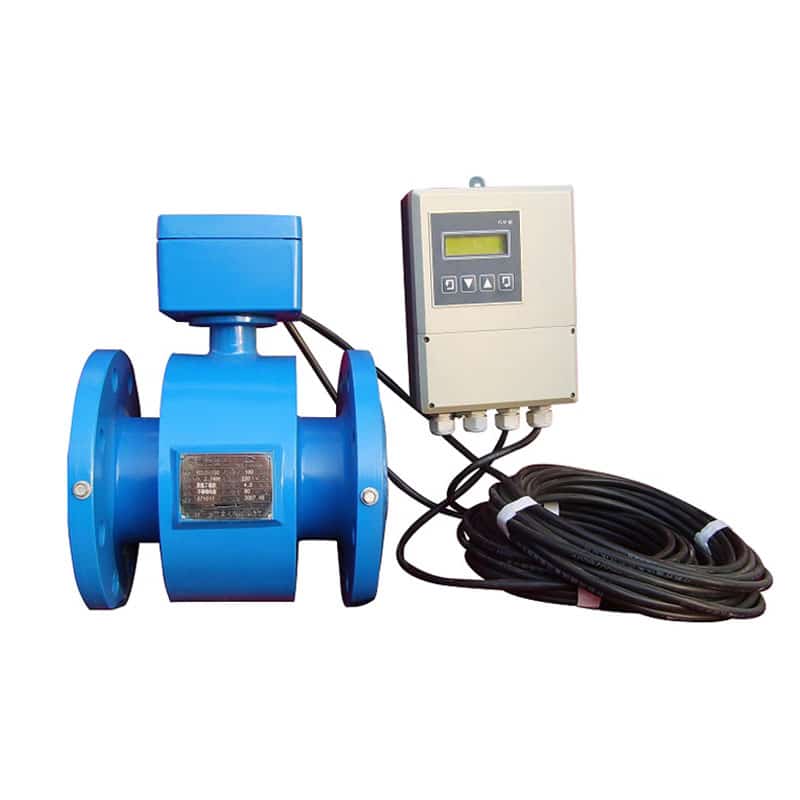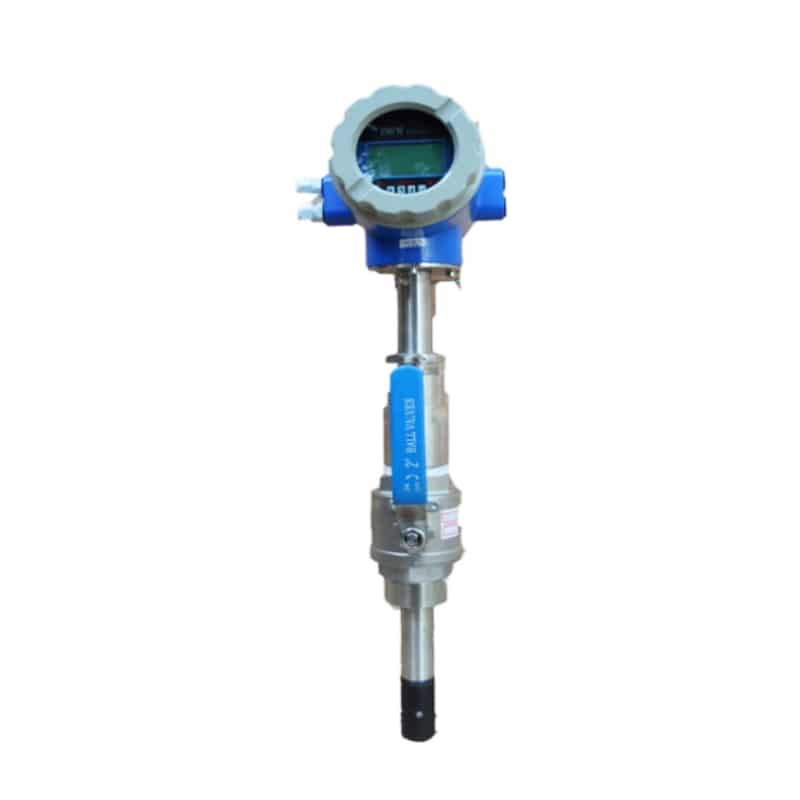Magnetic flow meters are important in the field of fluid measurement because of their ability to accurately and reliably measure the flow of fluids. In the process of flow measurement, the size selection of a magnetic flow meter is crucial, which directly affects the accuracy and stability of flow measurement. Correctly selecting the right size magnetic flow meter can ensure the accuracy of flow measurement results and improve the efficiency of production process control and management, thus providing reliable flow measurement solutions for a variety of industrial and commercial applications.
Basic concepts of magnetic flow meter sizing
The sizing of a magnetic flow meter usually involves several basic concepts including diameter, length, etc:
- Diameter: The diameter of the pipe is the inner or outer diameter of the pipe when the magnetic flow meter is installed inside the pipe. The inside diameter of the pipe is usually used as a reference size because the fluid flows inside the pipe. The size of the pipe diameter is critical to the selection of the magnetic flow meter because different diameter pipes require different sizes of magnetic flow meters to ensure the accuracy of the measurement.
- Length: Length usually refers to the installation length of the magnetic flow meter, that is, the magnetic flow meter in the pipeline to occupy the space. Length is also one of the important parameters of the magnetic flow meter size because it determines the magnetic flow meter in the pipeline installation location and layout.
- Sensor length: Sensor length refers to the length of the sensor part of the magnetic flow meter, which is usually the part installed inside the pipe. Sensor length directly affects the magnetic flow meter sensitivity and measurement accuracy.
- Installation length: The installation length is the length of the magnetic flow meter required for installation in the pipe, including the length of the sensor and any necessary pipe extensions. The correct installation length is essential to ensure proper operation and accurate measurement of the magnetic flow meter.
The need to choose the right size for a magnetic flow meter:
Size plays a crucial role in the selection and application of magnetic flow meters and its importance cannot be ignored. Choosing the right size magnetic flow meter is one of the key steps to ensure the accuracy and stability of flow measurement.
First of all, the correct size can ensure that the magnetic flow meter is a perfect match for the pipeline, ensuring that it can accurately measure the flow of the fluid in the pipeline. If the size of the magnetic flow meter chosen is too large or too small, it may lead to measurement deviation, thus affecting the control and management of the production process.
Secondly, the appropriate size of the magnetic flow meter can ensure that its installation and layout inside the pipeline meet the requirements to ensure the normal flow of fluid and the stability of the measurement sensor. If the size is not selected properly, it may lead to installation difficulties, pipe blockage or sensor damage, and other problems, thus affecting the accuracy and reliability of the measurement results.
Therefore, to ensure that the magnetic flow meter can perform optimally and provide a reliable flow measurement solution, it is crucial to choose the right size of the magnetic flow meter. When selecting the size of the magnetic flow meter, full consideration should be given to the pipe diameter, flow range, and specific application requirements to ensure that the magnetic flow meter selected can meet the requirements of the actual application and provide accurate and reliable flow measurement data.
Range of sizes for different types of magnetic flow meters
The different types of magnetic flow meters (one-piece, split, insertion, etc.) differ in size range and application scenarios. Here are some of their characteristics and application scenarios:
One-piece magnetic flow meter
- Size range: One-piece magnetic flow meters are usually suitable for smaller diameter pipes, with a size range typically between a few millimeters and hundreds of millimeters.
- Application: The one-piece magnetic flow meter structure is simple, easy to install, and commonly used in small industrial pipelines, laboratory applications, water treatment systems, and other scenarios.


Split magnetic flow meter
- Size range: Split magnetic flow meters are suitable for medium to large-diameter pipelines, with sizes typically ranging from tens to hundreds of millimeters.
- Application: Split magnetic flow meter installation requires a flange on the pipe, suitable for industrial process control, chemical production, water treatment systems, and other fields.


Insertion type magnetic flow meter
- Size range: Insertion type magnetic flow meter is suitable for pipeline diameter is large, the flow rate of the scene, its size range is usually from hundreds of millimeters to several meters.
- Application: Insertion-type magnetic flow meter is usually installed by drilling holes in the pipe and then inserting the sensor, which is suitable for environmental monitoring, water resource management, the petrochemical industry, sewage treatment, and other fields.

What happens when a magnetic flow meter is undersized?
If the size of the magnetic flow meter is too small, the following situations may occur:
- Measurement inaccuracy: A magnetic flow meter’s measurement accuracy is affected by the flow velocity distribution in the pipe. If the size of the flow meter is too small, it may result in an uneven flow rate profile, which may affect the accuracy of the measurement.
- Increased pressure loss: Fluid flowing through a small-sized flow meter may increase pressure loss. This may result in increased system energy consumption and may affect system performance.
- Unstable fluid: Too small a flow meter size may cause turbulence or eddy currents to form in the fluid near the measurement point, which can make the fluid flow unstable. This may affect the stability and accuracy of the measurement.
- Equipment damage: If the flow meter is too small, it may not be able to handle the flow through the pipe. This can lead to damage or failure of the flow meter and piping equipment.
What happens when a magnetic flow meter is oversized?
The following conditions may occur when a magnetic flow meter is oversized:
- Reduced measurement sensitivity: The measurement sensitivity of a magnetic flow meter is directly proportional to the pipe size and flow rate. If the flow meter is oversized relative to the pipe, it may result in lower fluid flow velocities inside the flow meter, which reduces the sensitivity and accuracy of the measurement.
- Limited measurement Range: An oversized flow meter may limit the measurement range. For smaller flow ranges, the flow meter may not be able to provide accurate measurements, which can affect the monitoring and control of different flow ranges.
- Increased cost: Selecting a flow meter size that is too large may increase costs, as larger-sized flow meters are typically more expensive. In addition, installation and maintenance may also require more costs and resources.
- Fluid energy losses: Oversizing a flow meter may result in increased fluid energy losses because the fluid needs to overcome greater internal resistance. This can lead to increased energy consumption and reduced system performance.
How to choose the correct size of magnetic flow meter?
Here are some suggestions and tips to help readers correctly select the size of a magnetic flow meter:
- Accurately measure the pipe diameter: Before selecting a magnetic flow meter size, make sure you accurately measure the inside or outside diameter of the pipe. Size selection should be based on actual pipe dimensions to avoid unnecessary measurement errors caused by oversizing or undersizing.
- Consider flow range: Know the expected flow range of the fluid in the pipe to determine the required magnetic flow meter size. The larger the flow range, the larger the required magnetic flow meter size may be.
- Consider the application scenario: Select the appropriate magnetic flow meter size based on the actual application scenario and environmental conditions. For example, applications with high pressures, high temperatures, or corrosive fluids may require a more durable and adaptable magnetic flow meter.
- Choose the right type: Select the right type of magnetic flow meter (integral, split, insertion, etc.) based on the application requirements and piping characteristics, and select based on its size range.
- Consult professionals: If you are not sure how to choose the right size of magnetic flow meter, it is recommended to consult professionals or magnetic flow meter manufacturers, who can provide professional advice and guidance.
- Consider future expandability: When choosing the size of the magnetic flow meter, consider the possible future expansion of the pipeline or increase in the flow rate, and choose the size with a certain margin to ensure that the system will still be able to meet the demand in the future.
Summary
Correct selection of magnetic flow meter size is critical, need to consider the pipe diameter, flow range, application environment, and other factors. Ensure that the selection of the appropriate size to ensure that the magnetic flow meter and pipeline match, accurate measurement of fluid flow, and improve the stability and reliability of the system. It is recommended to fully consider the actual needs of the selection process and consult professional advice to ensure that the choice of magnetic flow meter can meet the requirements of the actual application.
Come consult with Apure on how to properly size a magnetic flow meter. Apure offers vortex flow meters, turbine flow meters, ultrasonic flow meters, and float flow meters in addition to magnetic flow meters.
